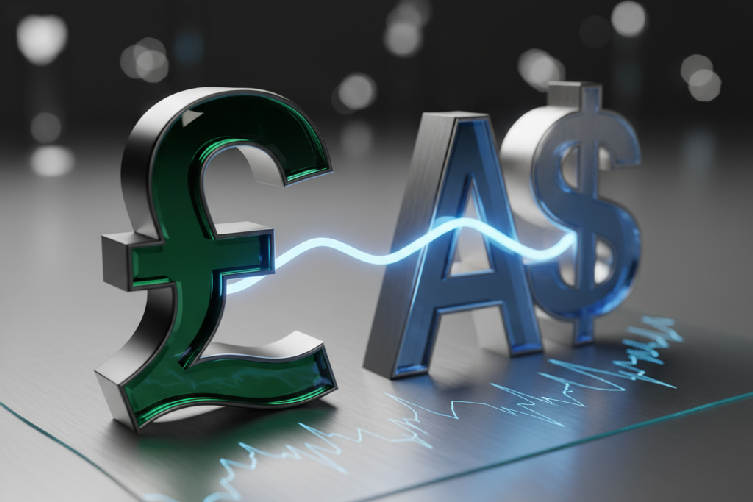What is GBP AUD in Forex? Your Complete Guide

Ever considered tapping into a forex pair where the British Pound meets the Australian Dollar? This combination creates dynamic trading opportunities that can seriously elevate your investment strategy. Understanding what GBP/AUD is in forex isn’t just helpful—it’s essential for traders who want to diversify their portfolios and chase better profits.
Whether you’re just starting your forex journey or you’re a seasoned pro refining your approach, mastering the GBP/AUD currency pair can unlock significant financial gains. In this guide, we’ll break down every angle of the GBP/AUD pair, from its core components to trading strategies, giving you the knowledge you need to succeed. We’ll also touch on why choosing a reliable forex broker is crucial for your trading experience.
Understanding GBP/AUD in Forex Trading
Getting a firm grasp of the GBP/AUD pair is the first step toward making informed trading decisions. Let’s dive into the fundamentals of each currency and see how their interaction shapes the market.
Defining GBP/AUD in Forex
The GBP/AUD forex pair simply represents the exchange rate between the British Pound Sterling (GBP) and the Australian Dollar (AUD). It tells you how many Australian Dollars you need to buy one British Pound. For instance, if the GBP/AUD rate is 1.8500, it means 1 GBP is worth 1.85 AUD. This pair is a favorite among traders looking to capitalize on the economic relationship and market dynamics between the UK and Australia.
The British Pound (GBP): A Pillar of Global Finance
The British Pound (GBP) is one of the world’s oldest and most-traded currencies. As the official currency of the United Kingdom, the GBP holds a major role in international finance and is a cornerstone of the forex market.
The pound’s strength is influenced by the UK’s economic health, political climate, and the monetary policies of the Bank of England. Traders keep a close eye on indicators like GDP growth, employment, and inflation to predict the GBP’s movements against currencies like the AUD.
The Australian Dollar (AUD): The Commodity Currency
The Australian Dollar (AUD) is the official currency of Australia and is often called a “commodity currency.” This is because Australia is a massive exporter of natural resources like iron ore, coal, and gold.

As a result, the AUD’s value is closely tied to global commodity prices and the health of Australia’s economy. The Reserve Bank of Australia’s monetary policy, along with economic data like GDP and employment figures, also plays a huge part in determining the AUD’s strength.
The Dynamics of GBP/AUD Currency Trading
Trading the GBP/AUD pair involves analyzing the relative value of the British Pound against the Australian Dollar. Traders aim to profit from fluctuations caused by economic data releases, geopolitical events, and shifts in market sentiment.
Understanding the complex relationship between the GBP and AUD is key to predicting market moves and making profitable trades. This pair is known for its volatility, making it an exciting option for traders who thrive in fast-moving market environments.
Factors Influencing the GBP/AUD Exchange Rate
Several key factors drive the GBP/AUD exchange rate, creating the trading landscape and offering opportunities for sharp investors. Let’s look at the main drivers that impact this currency pair.
Economic Indicators from the UK and Australia
Economic data is crucial for judging a currency’s strength. For the GBP/AUD pair, keep an eye on these indicators from both countries:
- GDP Growth: Stronger GDP growth in either the UK or Australia can boost their currency’s value, impacting the GBP/AUD rate.
- Employment Data: Low unemployment and strong job creation build investor confidence, typically strengthening a currency. High unemployment can have the opposite effect.
- Inflation Rates: Stable, controlled inflation helps a currency maintain its purchasing power. High inflation, however, can erode its value.
- Trade Balances: A trade surplus (exporting more than importing) can boost a currency’s value, while a trade deficit can weaken it.
Interest Rate Differentials: A Critical Component
The difference in interest rates between the Bank of England and the Reserve Bank of Australia has a major impact on the GBP/AUD exchange rate. Higher interest rates in one country compared to the other can attract foreign investment, which in turn strengthens its currency. Traders often use this differential to predict currency movements and build their strategies.
By staying informed on these economic drivers and understanding the unique characteristics of both the Pound and the Aussie Dollar, you can position yourself to trade the GBP/AUD pair more effectively. This knowledge forms the foundation of any successful forex strategy involving this volatile and opportunity-rich pair.